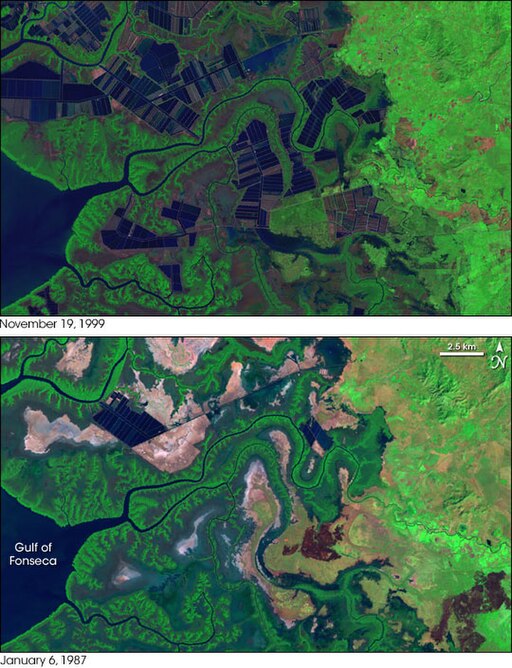The closing of a loophole in a venerable tariff act that allowed goods derived from slave labor to enter the US is welcome news.
In part, the impetus for reform arose from evidence of slavery and human trafficking in the shrimp industry.
More than 90 percent of the shrimp consumed in the US comes from overseas shrimp farms that rely on fishmeal as shrimp food. That fishmeal is produced from fish caught by trawlers, some of whose crews are forced to work in conditions of economic slavery.

While shrimp farms themselves aren’t implicated as users of slave labor (though the use of child labor has been widely reported in the industry), their feedstock is now seen as morally suspect.
Between 2006 and 2009, when I was researching shrimp aquaculture for my book on mangroves—Let Them Eat Shrimp: The Tragic Disappearance of the Rainforests of the Sea—I learned many grim details of the shrimp industry, both from former shrimp-farm workers and from communities whose lives had been affected by the depredations of the industry.
One thing to realize is that shrimp farming isn’t a labor-intensive industry like catching fish in the ocean. In fact, that’s one of the societal problems associated with the industry. It commandeers huge tracts of coastal land, displacing thousands of coastal people, while offering a paltry number of jobs in return. And those jobs are poorly paid and often involve handling dangerous chemicals.

So for the dozens of tropical countries where the shrimp industry has established itself—the so-called “developing” nations of Southeast Asia, central Africa and Central and South America—the primary justice issue is not enslavement of people but their displacement from traditional food-harvesting areas and the loss of a vital forest resource.
After my book was published, I gave an illustrated talk on the destructive impact of shrimp farming on mangroves to an audience of “thought leaders” in New York.
I recall getting quite passionate about the bulldozing of mangrove forests and the ensuing loss of food security for coastal people who rely on these saltwater forests for sustenance, livelihood, identity and all forms of wellbeing.

I probably quoted a mangrove activist in Honduras who said of the conversion of mangrove forests into shrimp ponds, “We have turned the blood of our people into an appetizer.”
During the question time that followed the presentation, a woman in the audience asked if there were any known health issues with eating farmed shrimp, because surely this was the only factor that would cause people to reconsider their consumption of it.
I was taken aback. Call me idealistic and naïve, but I had thought that if a compelling enough case could be made for the infringed rights, displacement and impoverishment of mangrove dwellers, this would be cause enough for seafood diners in wealthy countries to swear off farmed shrimp.
I spluttered something about social justice and the immorality of a food system that is wilfully blind to its human impacts. But I knew in my heart that for this woman—and many like her—that wouldn’t be a persuasive enough reason to shift eating choices.

The same area in Honduras shown from 1987 (bottom) to 1999 and the corresponding removal of mangrove swamps for shrimp farming. Credit: By Jesse Allen, via Wikimedia Commons
People’s moral settings are complex. Evidence of human enslavement raises an outcry and compels long-overdue legislative reform. Evidence of environmental destruction and its consequences for subsistence communities? Not so much. That’s a more complex issue, involving as it does the collusion of the very governments that should be upholding the existence rights and food security of its least powerful citizens. It’s easy to let the issue slide.
Yet at the very least, knowledge is an essential first step to taking responsibility.
My New York audience may still be eating shrimp cocktails, but they can’t say they don’t know whose blood is in that appetizer.


